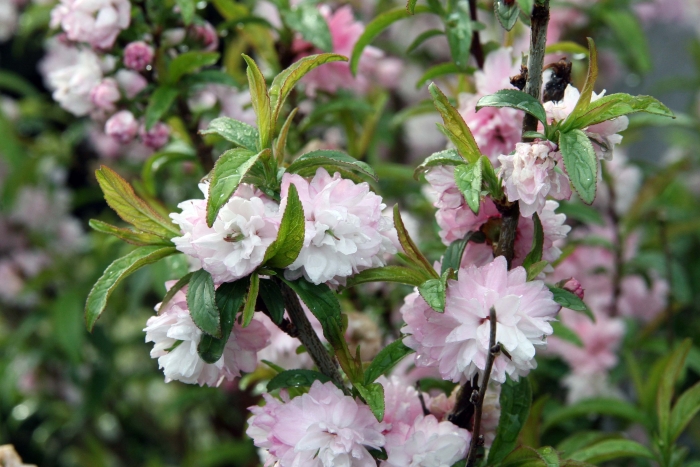Japanese Bush Cherry
(Prunus glandulosa)
Japanese Bush Cherry (Prunus glandulosa)
/
/

Photo by David J. Stang
CC BY-SA 4.0

























Estimated Native Range
Summary
Japanese Bush Cherry is valued for its ornamental qualities, including its attractive spring blossoms and its relatively small size, which makes it suitable for urban gardens, borders, and as a specimen plant. It is drought-tolerant once established, making it a good choice for xeriscaping. While it can adapt to a range of soil types, it performs best in well-drained soils and requires full sun to part shade to flourish. Gardeners should be aware that it can be susceptible to pests such as mice and diseases like canker and black knot. Pruning after flowering helps maintain its shape and encourages more prolific blooming in the following season.CC BY-SA 4.0
Plant Description
- Plant Type: Shrub
- Height: 4-5 feet
- Width: 3-4 feet
- Growth Rate: Moderate
- Flower Color: Pink, White
- Flowering Season: Spring
- Leaf Retention: Deciduous
Growth Requirements
- Sun: Full Sun, Part Shade
- Water: Medium
- Drainage: Medium
Common Uses
Bee Garden, Bird Garden, Butterfly Garden, Edible*Disclaimer: Easyscape's listed plant edibility is for informational use. Always verify the safety and proper identification of any plant before consumption., Fragrant, Low Maintenance, Rabbit Resistant, Showy Flowers
Natural Habitat
North and South Central China and Korea, thriving on rocky slopes and in open woodlands
Other Names
Common Names: Flowering Almond
Scientific Names: , Prunus glandulosa, Microcerasus glandulosa, Prunus glandulosa f. albiplena, Prunus glandulosa f. sinensis, Amygdalus pumila, Prunus japonica var. alboplena, Prunus sinensis, Prunus glandulosa var. sinensis, Prunus glandulosa var. albiplena
GBIF Accepted Name: Prunus glandulosa Thunb.